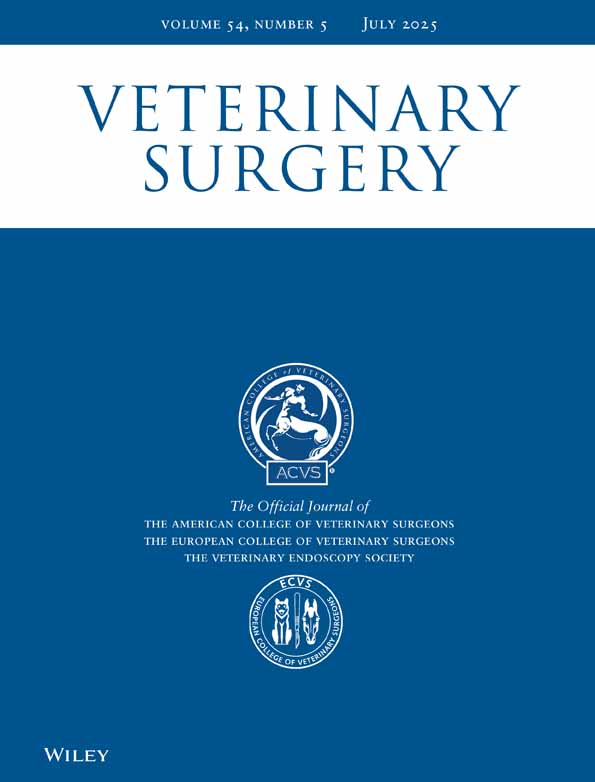Arthroscopy of the Coxofemoral Joint of Foals
Abstract
An arthroscopic procedure for examination of the coxofemoral joint was developed in nine foals (four cadavers, five anesthetized) to determine if access was sufficient for evaluation and surgical treatment of intra-articular lesions. The joint was distended and the arthroscope inserted through the notch (incisura trochanterica) between the cranial and caudal parts of the greater trochanter. This portal allowed examination of the cranial, lateral, and caudal aspects of the joint. Mechanical distraction of the joint through an instrument portal located 2 to 4 cm cranial and 1 to 2 cm ventral to the arthroscope portal allowed examination of the ligament of the head of the femur, the femoral head, and articular and nonarticular surfaces of the acetabulum. Adduction and rotation of the limb improved visualization of the craniomedial and caudomedial portions of the femoral head. Traction applied to the distal limb allowed visualization of the same structures that were observed when mechanical distraction was used. Traction also created space for placement of surgical instruments into the joint through the instrument portal. Access to most regions of the joint was adequate, but access to the caudal and medial aspects of the joint was limited. Three foals were killed while they were anesthetized, and their coxofemoral joints were dissected. Two foals were allowed to recover from anesthesia and were observed for 30 days after surgery. One foal was mildly lame for 2 days after surgery. The other foal was not lame after surgery. The incisions healed, and the coxofemoral joints were radiographically normal by postoperative day 30.




